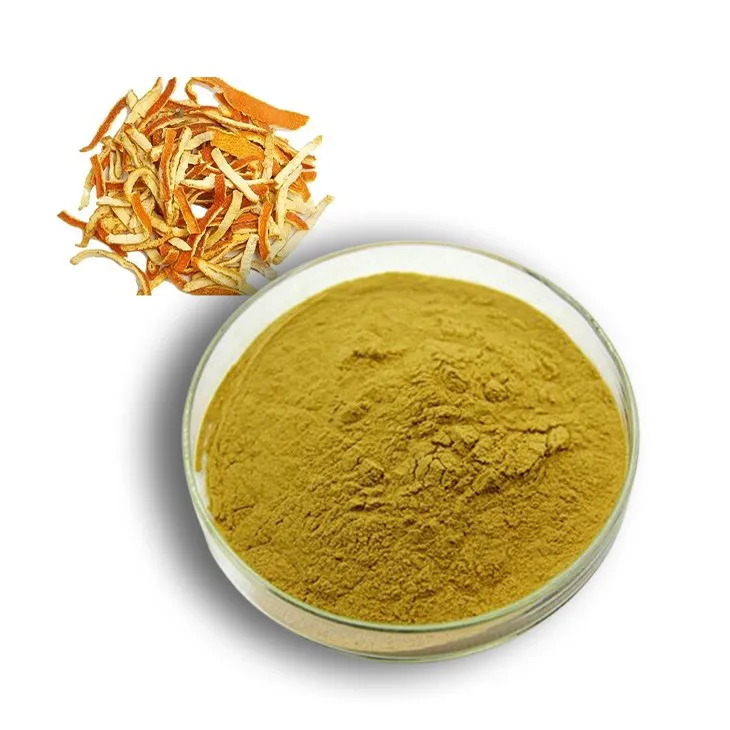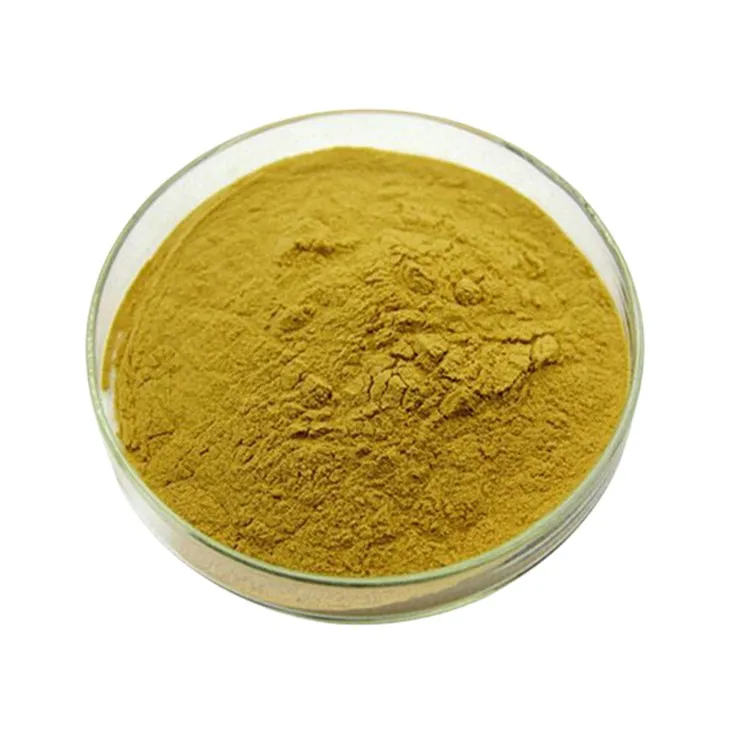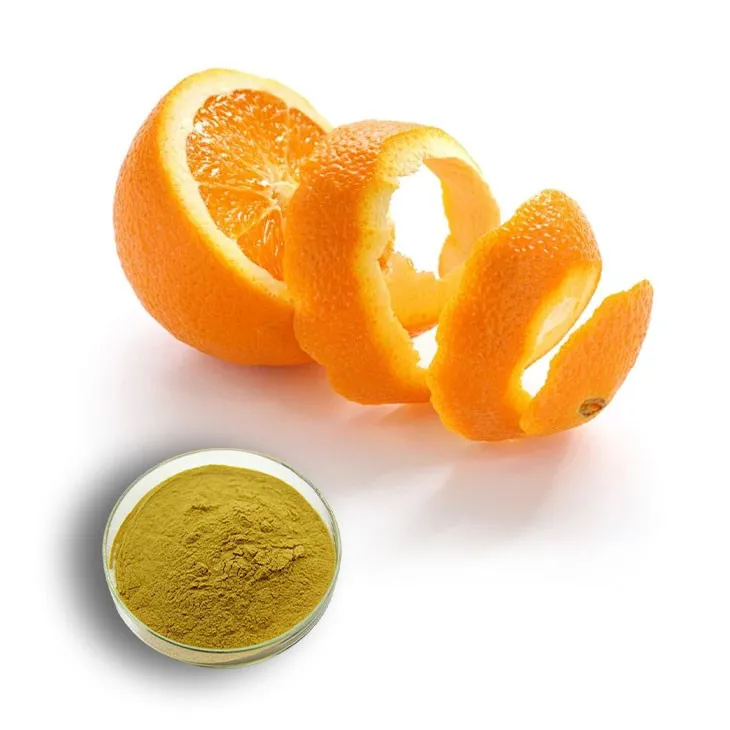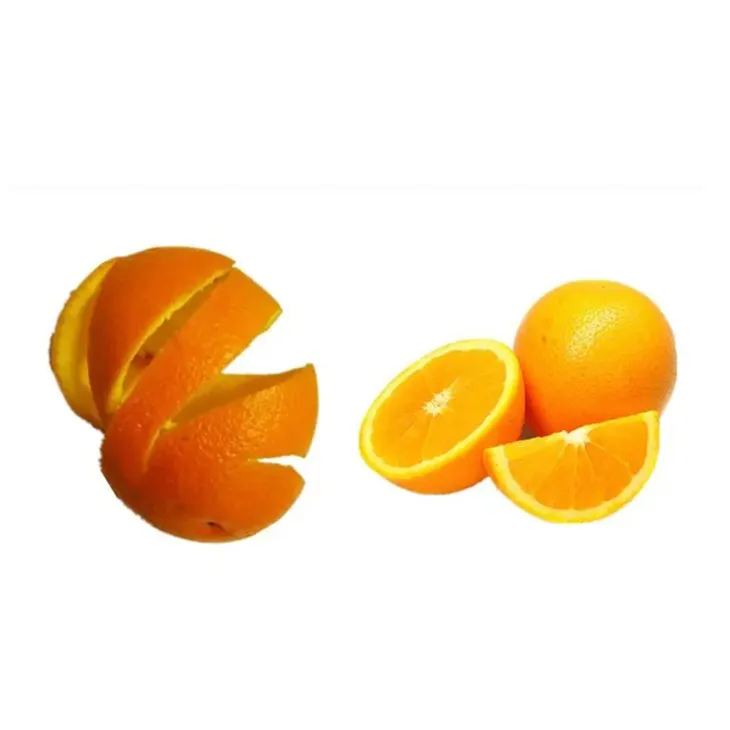- 0086-571-85302990
- sales@greenskybio.com
Standard - process Hesperidin.
2024-11-30

1. Introduction to Hesperidin
Hesperidin is a flavonoid compound that is primarily originated from citrus fruit peels. Citrus fruits, such as oranges, lemons, and grapefruits, are rich sources of Hesperidin. Flavonoids are a large class of plant secondary metabolites known for their various biological activities. Hesperidin, in particular, has attracted significant attention due to its potential health benefits and diverse applications in different industries.

2. Production of Standard - Process Hesperidin
2.1 Extraction Techniques
The production of standard - process hesperidin involves precise extraction techniques. These techniques are crucial in obtaining a high - quality product. One of the common extraction methods is solvent extraction. Solvents such as ethanol or methanol are often used to extract hesperidin from citrus fruit peels. The choice of solvent depends on factors like solubility, selectivity, and safety. Another technique is supercritical fluid extraction, which uses supercritical carbon dioxide. This method has the advantage of being more environmentally friendly and can produce a purer extract.
2.2 Quality Control
In the production process, strict control over parameters is essential to ensure the purity and safety of hesperidin. Parameters such as temperature, pressure, and extraction time need to be carefully monitored. For example, during solvent extraction, the temperature should be maintained within a specific range to optimize the extraction efficiency while avoiding the degradation of hesperidin. Additionally, purification steps are often included to remove impurities such as other flavonoids, sugars, and proteins. Analytical methods like high - performance liquid chromatography (HPLC) are used to measure the purity of the hesperidin product.
3. Applications of Standard - Process Hesperidin
3.1 Pharmaceutical Industry
In the pharmaceutical industry, hesperidin has shown great potential in treating various diseases. One of the main areas of application is in the treatment of inflammation - related diseases. Hesperidin has anti - inflammatory properties, which can help reduce inflammation in the body. It can be used in the treatment of conditions such as arthritis, where inflammation in the joints causes pain and reduced mobility. Another important application is in the treatment of blood vessel - related diseases. Hesperidin can improve blood vessel function by enhancing endothelial function. It can help in the prevention and treatment of cardiovascular diseases such as hypertension and atherosclerosis.
3.2 Food Industry
In the food industry, standard - process hesperidin has multiple applications. One of the key uses is for preservation. Hesperidin has antioxidant properties, which can help prevent the oxidation of food components. This can extend the shelf life of food products, especially those containing fats and oils that are prone to oxidation. Additionally, hesperidin can be used for flavor enhancement. It can add a unique citrus - like flavor to food products, making them more appealing to consumers. For example, it can be added to beverages, baked goods, and dairy products.
3.3 Cosmetics Industry
The cosmetics industry also benefits from the use of standard - process hesperidin. Hesperidin has skin protection properties. It can protect the skin from damage caused by environmental factors such as ultraviolet (UV) radiation, pollution, and free radicals. In skin care products, hesperidin can be used in creams, lotions, and serums. It can help improve skin texture, reduce wrinkles, and enhance skin elasticity.
4. Market Prospects of Standard - Process Hesperidin
The market prospects for standard - process hesperidin are broad. With the increasing awareness of health and wellness, consumers are more interested in natural products with health - promoting properties. Hesperidin, being a natural compound from citrus fruits, fits well into this trend. In the pharmaceutical industry, the demand for natural drugs and supplements is growing, and hesperidin has the potential to be developed into new drugs or dietary supplements. In the food industry, the demand for natural preservatives and flavor enhancers is also on the rise. Cosmetics companies are also constantly looking for new ingredients to improve their products' performance and appeal.

5. Challenges Facing Standard - Process Hesperidin
5.1 Cost - effectiveness
One of the major challenges is cost - effectiveness. The production of standard - process hesperidin can be expensive, especially when using advanced extraction techniques. The cost of raw materials, solvents, and equipment can add up, making the final product costly. This can limit its widespread use in some industries. To overcome this challenge, research is needed to develop more cost - effective extraction and production methods. For example, finding alternative solvents or optimizing the production process to reduce waste and energy consumption.
5.2 Standard Unification
Another challenge is standard unification. Currently, there are different standards for hesperidin in different regions and industries. This can lead to confusion in the market and affect the quality control and trade of hesperidin products. There is a need for international standardization to ensure the quality and safety of hesperidin products. This includes setting unified standards for purity, extraction methods, and product specifications.6. Conclusion
Standard - process hesperidin, originating from citrus fruit peels, is a valuable flavonoid compound with diverse applications in the pharmaceutical, food, and cosmetics industries. While it has broad market prospects, challenges such as cost - effectiveness and standard unification need to be addressed. With further research and development, it is expected that the production of standard - process hesperidin will become more efficient and cost - effective, and the standards will be unified, enabling it to fully realize its potential in various industries.
FAQ:
What is hesperidin?
Hesperidin is a flavonoid compound originating from citrus fruit peels.
What are the key aspects in the standard - process of hesperidin?
In the standard - process of hesperidin, precise extraction techniques are used. There is strict control over parameters to ensure high - quality products in terms of purity and safety.
What are the applications of standard - process hesperidin in the pharmaceutical industry?
In the pharmaceutical industry, standard - process hesperidin can be used for treating diseases related to inflammation and blood vessels.
How is standard - process hesperidin used in the food industry?
In the food industry, it is used for preservation and flavor enhancement.
What are the challenges faced by standard - process hesperidin?
Despite its broad market prospects, standard - process hesperidin has to overcome challenges including cost - effectiveness and standard unification.
Related literature
- The Role of Hesperidin in Modern Pharmacology"
- "Hesperidin: Extraction and Purification Techniques for Standard - Process"
- "Hesperidin Applications in the Food and Cosmetics Industries"
- ▶ Hesperidin
- ▶ citrus bioflavonoids
- ▶ plant extract
- ▶ lycopene
- ▶ Diosmin
- ▶ Grape seed extract
- ▶ Sea buckthorn Juice Powder
- ▶ Beetroot powder
- ▶ Hops Extract
- ▶ Artichoke Extract
- ▶ Reishi mushroom extract
- ▶ Astaxanthin
- ▶ Green Tea Extract
- ▶ Curcumin Extract
- ▶ Horse Chestnut Extract
- ▶ Other Problems
- ▶ Boswellia Serrata Extract
- ▶ Resveratrol Extract
- ▶ Marigold Extract
- ▶ Grape Leaf Extract
- ▶ blog3
- ▶ blog4
-
The best - quality Goldenseal extract.
2024-11-30
-
Certified organic bayberry extract.
2024-11-30
-
100% Pure Natural Troxerutin.
2024-11-30
-
Nature's Bounty Marshmallow Root Extract.
2024-11-30
-
Vitamin B6 Suppliers
2024-11-30
-
Organic deer antler extract powder factory.
2024-11-30
-
Scutellaria Extract
2024-11-30
-
Kidney Bean Extract
2024-11-30
-
Andrographis Paniculata Extract Powder
2024-11-30
-
Sophora Japonica Flower Extract
2024-11-30
-
Agaricus Blazei Extract
2024-11-30
-
Hawthorn powder
2024-11-30
-
Dandelion Leaf Extract
2024-11-30
-
Elderberry Extract
2024-11-30
-
Licorice Root Extract Powder
2024-11-30
-
Tinospora cordifolia extract
2024-11-30





















